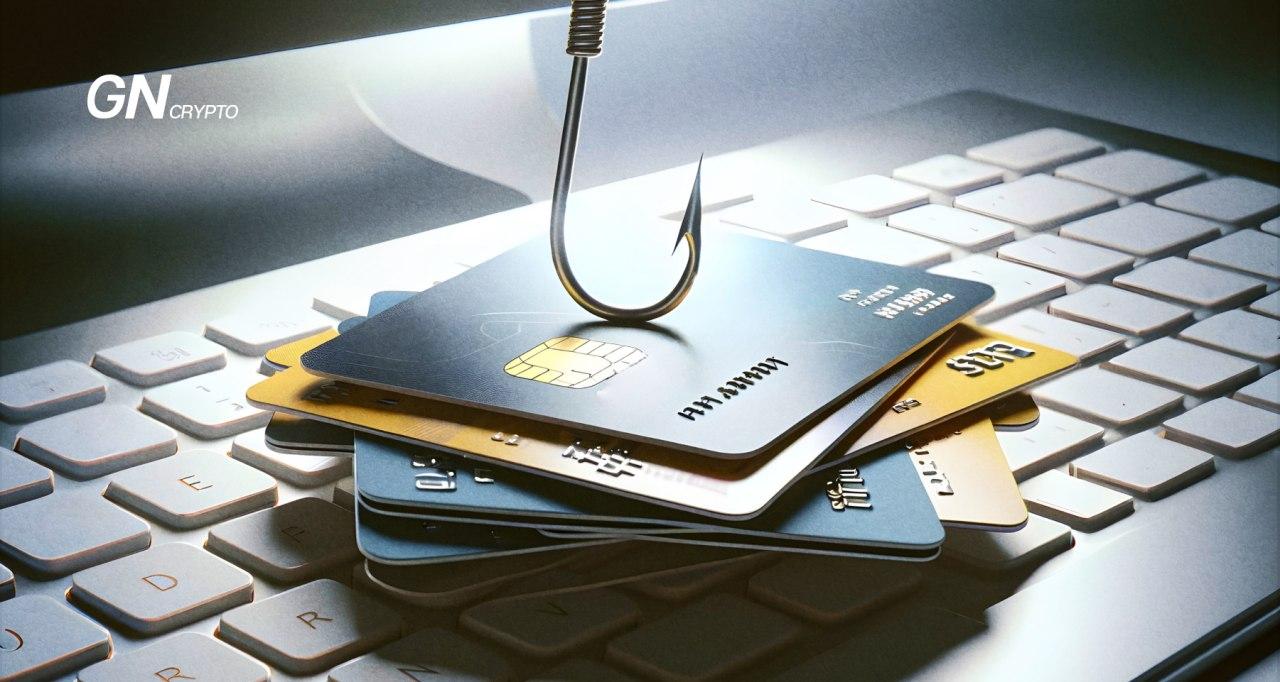Expert Tips for Avoiding Scams and Phishing Attacks

In today’s financial landscape, digital assets are playing an increasingly significant role, offering new opportunities but also presenting unique challenges. As the cryptocurrency market grows, so does the complexity of the risks associated with it. The importance of strong security measures has never been greater, especially as hackers and scammers continue to evolve their tactics.
On this page
The Alarming Reality of Crypto Scams
Recent data from Immunefi, a prominent bug bounty and security platform, highlights the scale of the issue: over $1.3 billion has already been lost to hacking incidents since early 2024. Alarmingly, nearly $424 million of these losses occurred in the third quarter alone, reflecting the persistent and sophisticated nature of cyber threats.
Source: Immunefi
Moreover, a report from blockchain analytics firm Chainalysis reveals that fraudsters are adapting quickly, launching shorter and more lucrative scam campaigns. The average duration of these schemes has dropped significantly—from 271 days for scams initiated in 2020 to just 42 days in 2024. This shift towards more rapid and impactful operations poses new challenges for both investors and security professionals.
Source: Chainalysis
In this evolving environment, staying informed is crucial for protecting your assets. This article not only guides you through some of the most common types of crypto scams but also offers practical advice to help you navigate the risks and enhance the security of your investments. Additionally, it features an exclusive expert commentary on how to safeguard yourself from fraud in the crypto space and actionable steps to strengthen your security assets.
A Guide to Common Scams
Understanding the different forms of crypto fraud is crucial to safeguarding your investments. Below are some of the most prevalent scams in the cryptocurrency space, along with warning signs and protective measures to help you navigate these risks.
1. Phishing Attacks
Phishing is one of the most common and persistent threats in the digital realm. These scams involve sending deceptive messages that appear to be from legitimate sources, such as well-known crypto exchanges or wallet providers, with the aim of tricking recipients into revealing sensitive information. Often, the message may claim that your account has been compromised and direct you to a counterfeit website designed to steal login credentials.
Warning Signs:
- Messages or emails from unknown sources that imitate reputable companies.
- Web addresses with subtle misspellings or unusual domain endings (e.g., “сrypt0assets.com” instead of “сryptoassets.com”).
Protective Measures:
- Always verify messages by visiting the official website of the company directly, rather than clicking on links.
- Use antivirus software and browser extensions that can detect and block phishing attempts.
2. Investment Scams
Promises of “guaranteed returns” or “risk-free investments” are classic red flags for fraudulent schemes. Scammers often lure victims through social media, flashy advertisements, or even fake celebrity endorsements, claiming to offer lucrative investment opportunities. Once funds are deposited, however, the scammer disappears, and the supposed investment turns out to be nonexistent.
Warning Signs:
- Unsolicited investment offers with promises of high returns and little to no risk.
- High-pressure tactics urging quick decisions or implying limited-time opportunities.
Protective Measures:
- Conduct thorough research on any investment opportunity. Ensure that the company is properly registered and regulated.
- Avoid platforms or individuals that push you to invest quickly without adequate time for due diligence.
3. Fake Giveaways
Fraudulent giveaways are a popular tactic among crypto scammers. These schemes often involve fake promotions that promise free cryptocurrency in exchange for a small initial payment. The scams may exploit the names of well-known figures in the crypto space, falsely claiming their endorsement to appear more credible.
Warning Signs:
- Requests to send cryptocurrency in advance as a condition for receiving more.
- Social media posts or emails advertising unrealistic rewards or using unverifiable sources.
Protective Measures:
- Legitimate giveaways never require upfront payments. Always verify such events on the official social media channels of the company or individual mentioned.
- Be cautious of offers that seem too good to be true, and cross-check any claims with official announcements.
4. Pump-and-Dump Schemes
Pump-and-dump schemes involve artificially inflating the price of a low-value cryptocurrency through coordinated buying efforts, followed by a mass sell-off that leaves unsuspecting investors with worthless tokens. This tactic is often promoted on social media, where influencers or anonymous users create hype around the coin to attract buyers.
Warning Signs:
- Sudden and unexplained surges in a token's price and trading volume.
- Heavy promotion of obscure coins, often with little real-world application or development activity.
Protective Measures:
- Be cautious with advice from online forums or social media, especially for lesser-known cryptocurrencies.
- Focus on coins with strong fundamentals, such as reputable development teams and well-established communities.
5. Man-in-the-Middle (MITM)
AttacksMITM attacks are sophisticated forms of digital interception where a hacker alters the communication between two parties. In the context of crypto transactions, this could mean changing the recipient's wallet address without the sender's knowledge, leading to a loss of funds.
Warning Signs:
- Unexpected requests for additional transaction confirmations or unusual prompts during the transfer process.
- Delays or irregularities in transaction execution on platforms that are typically reliable.
Protective Measures:
- Avoid making transactions over public Wi-Fi networks, which are more vulnerable to interception.
- Use a Virtual Private Network (VPN) to encrypt your internet connection, providing an extra layer of security.
6. Fake Crypto Exchanges and Wallets
Scammers often create counterfeit cryptocurrency exchanges or wallet applications that mimic legitimate ones. These fake platforms may look professional and offer attractive features, but once you deposit funds, you may find that withdrawals are blocked, or the platform simply disappears.
Warning Signs:
- Platforms with no verifiable history or community reputation.
- Unusually low fees or promises of high returns without detailed explanations.
Protective Measures:
- Stick to well-known exchanges and wallet providers with established reputations.
- Verify the platform's credentials and user reviews before making any transactions.
7. Employment Scams
In the age of remote work, scammers may use job offers that promise high earnings in cryptocurrency to lure victims. These scams can involve requests for an upfront investment for “training” or equipment, with the promise of future payments in crypto.
Warning Signs:
- Job offers that require an upfront payment or investment.
- Positions promising high rewards with minimal effort or qualifications.
Protective Measures:
- Never provide personal financial information or payments during the job application process.
- Research the company thoroughly and confirm that job listings are genuine.
8. Unregistered Platforms
New crypto platforms emerge frequently, but not all comply with regulatory requirements. Unregistered platforms may operate in a legal gray area, exposing investors to greater risks.
Warning Signs:
- Lack of registration with financial authorities or regulatory bodies.
- Pressure to invest quickly without providing sufficient company details.
Protective Measures:
- Verify the platform's registration status with relevant authorities.
- Be cautious about investing in platforms that do not provide transparency about their operations.
9. Guaranteed High Returns (Ponzi and Pyramid Schemes)
Ponzi and pyramid schemes attract investors by promising exceptionally high returns with little to no risk. In reality, these schemes use funds from new investors to pay earlier participants, and when recruitment slows down, the scheme collapses.
Warning Signs:
- Claims of guaranteed profits with no associated risks.
- High-pressure sales tactics encouraging you to invest immediately.
Protective Measures:
- Be wary of anyone promising guaranteed returns in a volatile market like cryptocurrency.
- Report such schemes to relevant authorities if encountered.
Protecting User Assets on Cryptocurrency Exchanges
Protecting user assets in the cryptocurrency industry is a crucial component of building trust and ensuring security. As the primary platforms for trading digital assets, crypto exchanges implement various advanced methods and technologies to protect users from fraud, hacking, and other risks.
In evaluating the technical risks, we rely on Hacken.io, a leader in the field of cybersecurity, and their project CER.live. Hacken regularly monitors exchanges across a broad range of parameters, which are combined into an overall security score. The highest possible rating, “AAA,” indicates top-tier security. This comprehensive assessment helps users make informed decisions when choosing a secure platform for saving assets:
Security score of the Coinbase exchange Source: CER.live
Coinbase – a leading U.S.-based cryptocurrency exchange founded in 2012. Known for its user-friendly interface, it's particularly suitable for crypto newcomers. Coinbase implements a range of robust security measures to protect its users:
- Multi-level authentication: Beyond standard two-factor authentication (2FA), Coinbase offers an innovative “Security Prompt” for faster and more secure logins.
- Cold storage: 98% of client crypto assets are stored offline, significantly reducing the risk of hacking attempts.
- 1:1 asset ratio: Coinbase ensures that user funds are not used for lending or other corporate purposes, maintaining full reserves.
- Proactive monitoring: Utilizes machine learning to analyze transactions in real-time and detect suspicious activities.
- Coinbase Vault: A special feature allowing users to set additional security steps for withdrawals, creating a “time-locked” effect.
- Self-custody option: The Coinbase Wallet feature enables users to manage their own private keys, providing full control over assets.
- Vigilant communication: Proactive notifications for major security changes and alerts for suspicious activities.
Security score of the Crypto Com exchange Source: CER.live
Crypto.com – a Hong Kong-based cryptocurrency exchange launched in 2016, supporting over 250 digital assets. The platform stands out with its comprehensive security measures:
- Cold wallet storage: Over 90% of user funds are stored in offline cold wallets, distributed across geographically dispersed institutional-grade vaults.
- Multi-factor authentication (MFA): Supports various 2FA methods, including app-based authentication and biometric verification.
- Anti-phishing measures: Offers personalized anti-phishing codes for email verification and uses TLS encryption for communications.
- Withdrawal safeguards:
- Address whitelisting feature
- 24-hour cooling-off period for new withdrawal addresses
- Email verification for all withdrawal requests
- Secure development: Implements a Secure Software Development Life Cycle (SDLC) with regular third-party audits.
- Real-time monitoring: Employs tools to track network traffic and application behavior for anomalies.
- Proof of Reserves (PoR): Regular audits by Mazars Group to ensure 1:1 backing of user assets, using Merkle Tree verification.
- Additional features:
- Multi-signature wallet protocols for cold storage
- Biometric identification
- Secure device management
- IP address whitelisting.
Security score of the Bitget exchange Source: CER.live
Bitget – a centralized cryptocurrency exchange established in 2018 and registered in Seychelles. The platform supports over 800 cryptocurrencies and offers more than 1100 trading pairs. Bitget implements a comprehensive security framework:
- Cold storage: User assets are stored in offline “cold” wallets, significantly reducing the risk of hacks.
- Data encryption: Employs robust encryption for all transmitted data.
- Network security: Utilizes firewalls and intrusion detection systems to protect against cyber threats.
- Anti-phishing measures: Implements anti-phishing checks to safeguard users from fraudulent activities.
- Two-factor authentication (2FA): Offers 2FA to enhance account security.
- Proof of Reserves: Regularly undergoes reserve verification procedures. Current reserve ratio stands at 163%, ensuring the exchange's solvency.
- Continuous monitoring: Conducts real-time surveillance of platform activities to swiftly detect and respond to suspicious actions.
- Clean security record: No reported hacks or data leaks since the exchange's inception.
Security score of the WhiteBIT exchange Source: CER.live
WhiteBIT – a European cryptocurrency exchange, established in 2018. It offers a comprehensive trading platform with over 300+ cryptocurrencies and 650+ trading pairs. WhiteBIT stands out with its robust security measures:
- Cold storage: 96% of digital assets are stored in cold wallets, significantly reducing vulnerability to hacks.
- Multi-layered protection: Utilizes Web Application Firewall (WAF) to detect and block malicious traffic, coupled with a multi-signature access system for cold wallets.
- Enhanced user security: Offers various two-factor authentication (2FA) options and custom anti-phishing codes for email verification.
- Proactive AML measures: Strict compliance with global anti-money laundering policies, including successful tracking and freezing of stolen assets.
- Withdrawal management: Users can whitelist withdrawal addresses, restricting transactions to pre-authorized blockchain addresses only.
- KYC verification: Mandatory for full platform access, demonstrating commitment to preventing fraud.
- Unique features: Offers criminal involvement checks for addresses (1 USDT fee) and free daily AML checks for WhiteBIT Coin holders.
When it comes to security, WhiteBIT goes beyond implementing robust protocols; the exchange actively promotes awareness about the importance of safeguarding user assets and addressing the risks that investors and traders face. Through creative and engaging campaigns, WhiteBIT focuses on informing users about potential threats and best practices for protection.
One of the latest initiatives, launched around Halloween, invites users to participate in a gamified experience that brings common cryptocurrency fears to life. The campaign features interactive quests and tasks based on characters representing various crypto-related dangers, making security education both fun and informative. This immersive approach not only raises awareness but also helps users develop practical skills for avoiding risks in the crypto space.
Related: Introducing WhiteBIT's New Telegram Game
Security score of the Kraken exchange Source: CER.live
Kraken – a prominent U.S.-based cryptocurrency exchange founded in 2011. Offering over 120 cryptocurrencies and various trading options, Kraken caters to both novice and experienced investors. The exchange implements a comprehensive security framework:
- Cold storage: 95% of user assets are stored in offline, cold wallets, minimizing the risk of theft.
- Multi-factor authentication: Supports 2FA via Google Authenticator and Yubikey, with no phone or SMS recovery options for enhanced security.
- Encrypted communication: Uses PGP/GPG encryption for all email correspondence, ensuring secure communication.
- Customizable security settings:
- Global settings lock
- IP address whitelisting
- Configurable account timeout
- Detailed API key access controls
- Withdrawal safeguards: Email confirmation required for withdrawals, with self-lock account option.
- Continuous monitoring: Real-time surveillance for suspicious activities.
- Data protection: All sensitive account data is encrypted at both system and data levels, with strict access controls.
- Compliance and auditing: Holds ISO 27001 and SOC 2 Type 1 certifications.
- Proactive security measures: Maintains an in-house security team and a Bug Bounty program to identify and address potential vulnerabilities.
How to Prevent Cryptocurrency Scams: Expert Recommendations
Staying ahead of crypto scammers is no easy task, but with the right knowledge, it’s possible to significantly reduce the risks. We reached out to blockchain developer James Bachini, a specialist in DeFi technologies, to gather expert advice on how to protect yourself from scams and phishing attacks in the cryptocurrency world.
Bachini stresses that if you suspect a scam, immediate action is crucial. His first recommendation?
- Stop all transactions involving compromised accounts, and lock or freeze your wallets or exchange accounts.
- Report the scam to both the exchange and law enforcement, as many exchanges have fraud teams that may help recover or freeze your funds.
- Revoke suspicious permissions using tools like Revoke.cash, especially if you’ve interacted with a malicious smart contract.
When it comes to avoiding phishing attacks, Jamesi’s top advice is to use a hardware wallet. “Keeping your assets offline with hardware wallets like Ledger or Trezor is one of the best defenses,” he says. James also suggests the following additional steps:
- Use multi-signature wallets to add an extra layer of security by requiring multiple approvals for transactions.
- Install phishing detection tools such as MetaMask’s browser extension to block suspicious links.
- Avoid clicking on unsolicited links from emails or social media, and always type URLs directly into your browser.
Bachini strongly reminds users that private keys and seed phrases should never be shared. “If someone asks for them, it's definitely a scam,” he warns.
Finally, he advises skepticism towards any investment offers that promise unrealistic returns: “If it sounds too good to be true, it probably is. Always research before committing.“
Conclusion
The cryptocurrency landscape offers exciting opportunities, but it also presents significant risks. By implementing robust security measures, staying informed about the latest threats, and following expert advice, investors and traders can significantly reduce their vulnerability to scams and phishing attacks.Remember, in the rapidly evolving crypto space, vigilance is your best defense. Stay cautious, continue learning, and always prioritize the security of your digital assets. With a proactive approach to security, you can navigate the crypto waters safely and confidently, maximizing the potential of this innovative financial frontier.
The content on The Coinomist is for informational purposes only and should not be interpreted as financial advice. While we strive to provide accurate and up-to-date information, we do not guarantee the accuracy, completeness, or reliability of any content. Neither we accept liability for any errors or omissions in the information provided or for any financial losses incurred as a result of relying on this information. Actions based on this content are at your own risk. Always do your own research and consult a professional. See our Terms, Privacy Policy, and Disclaimers for more details.
































